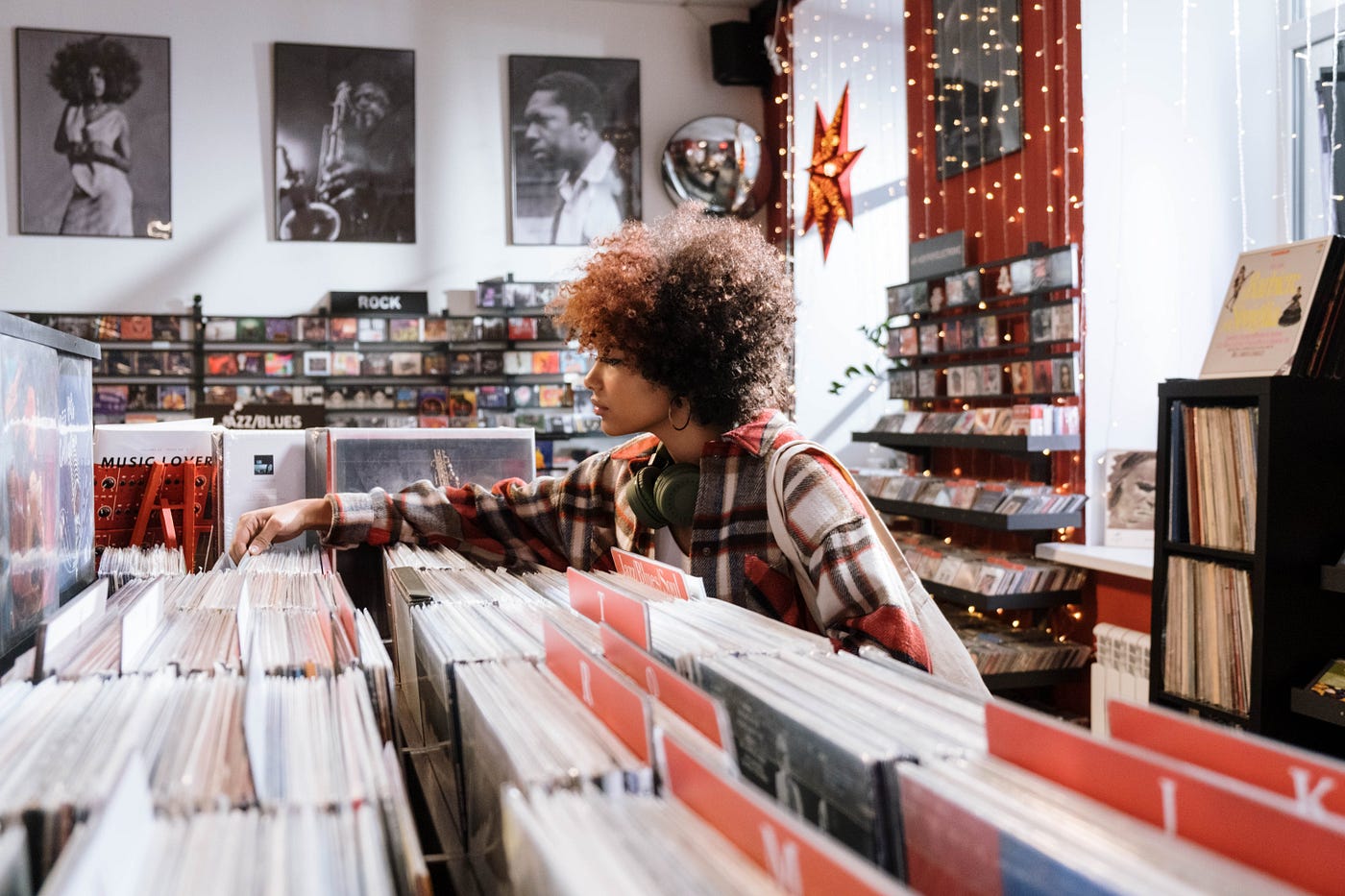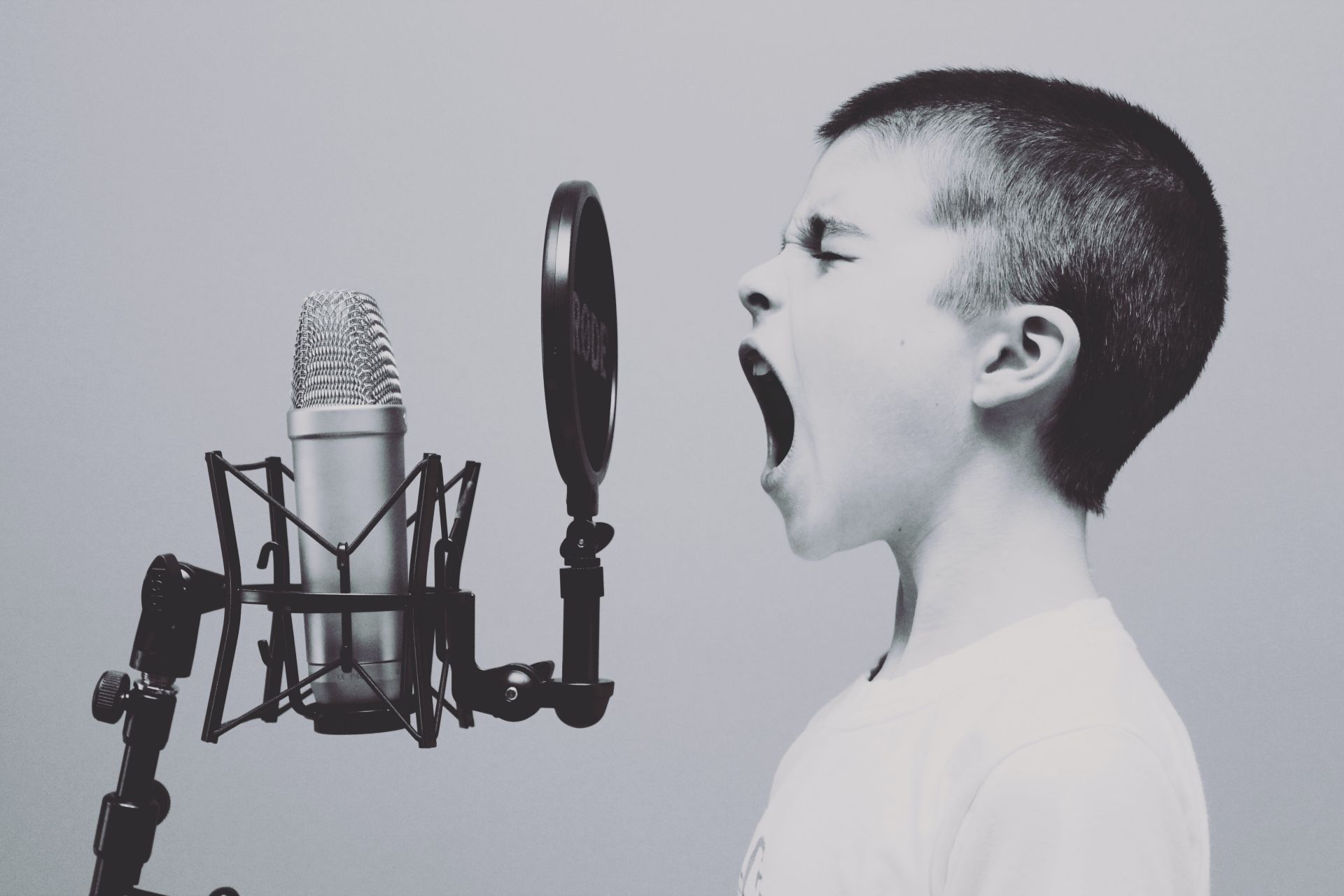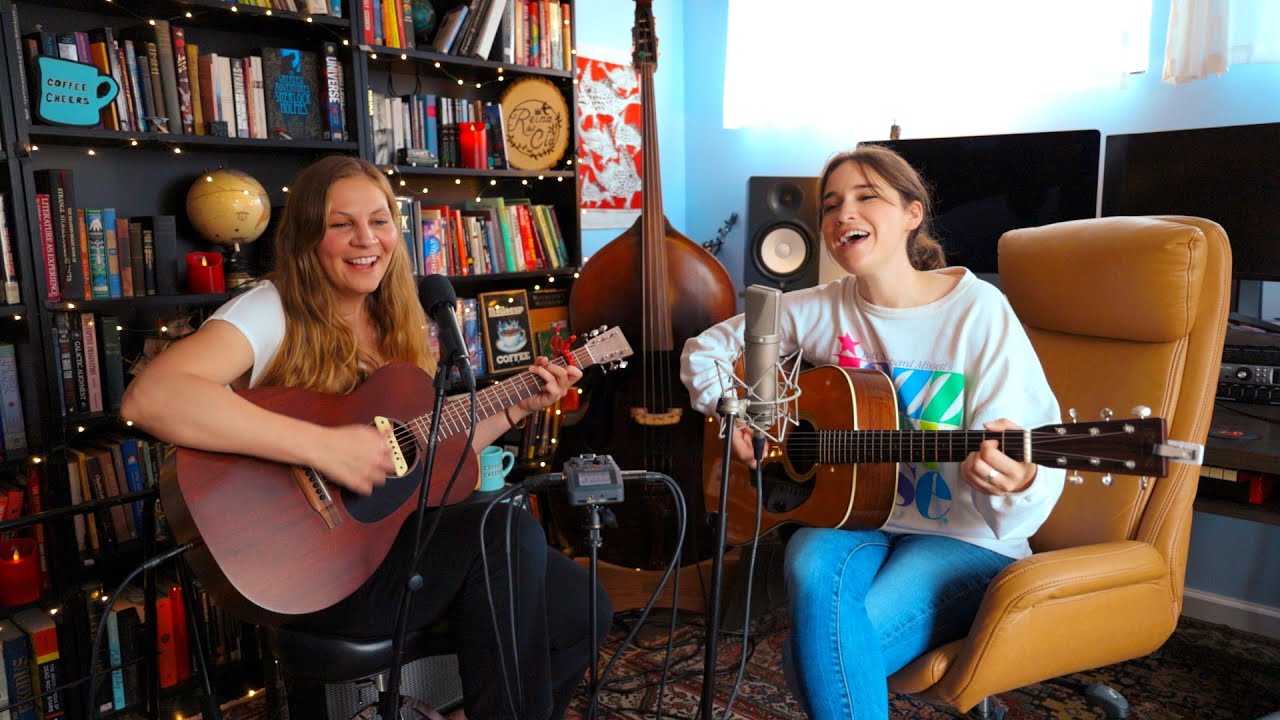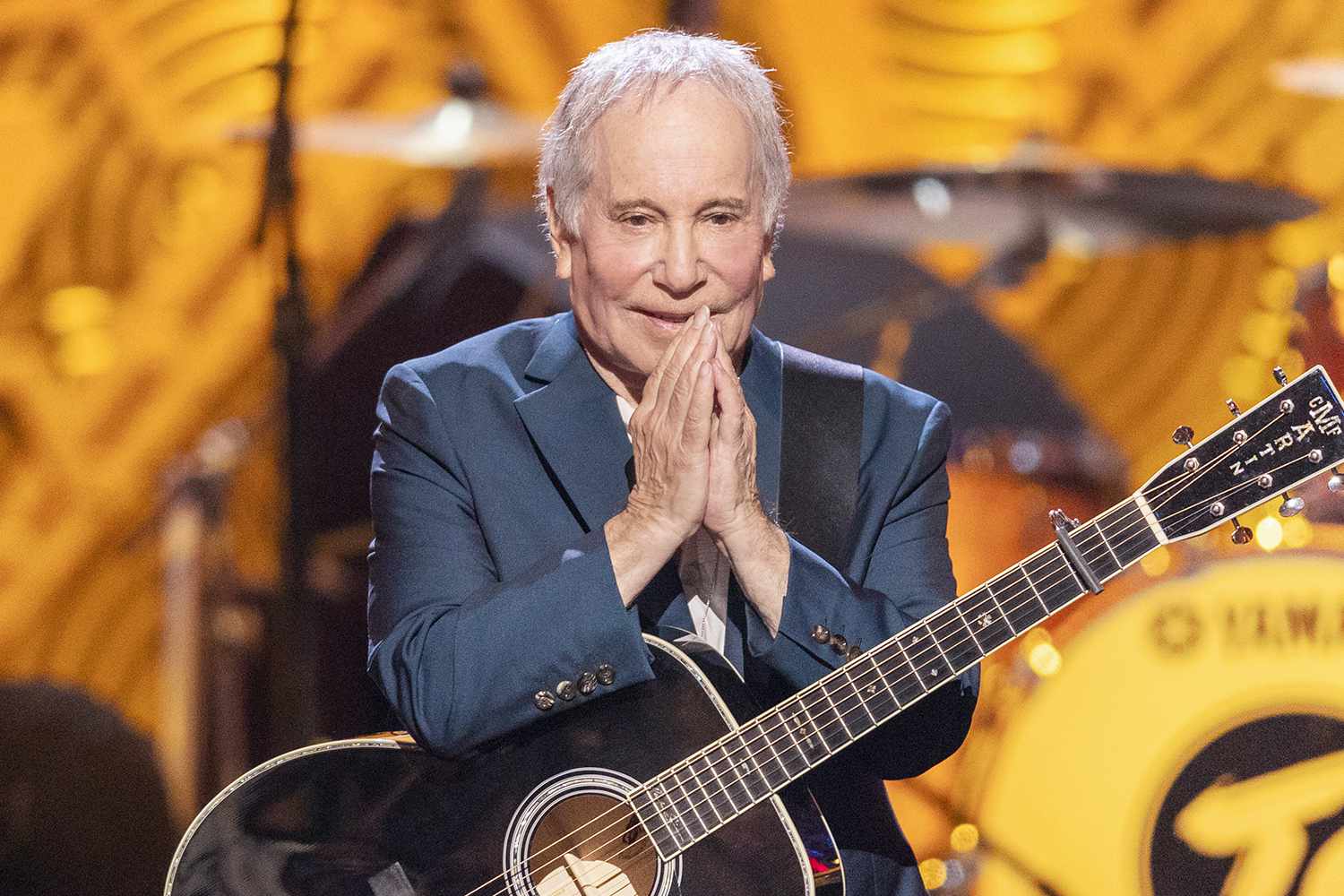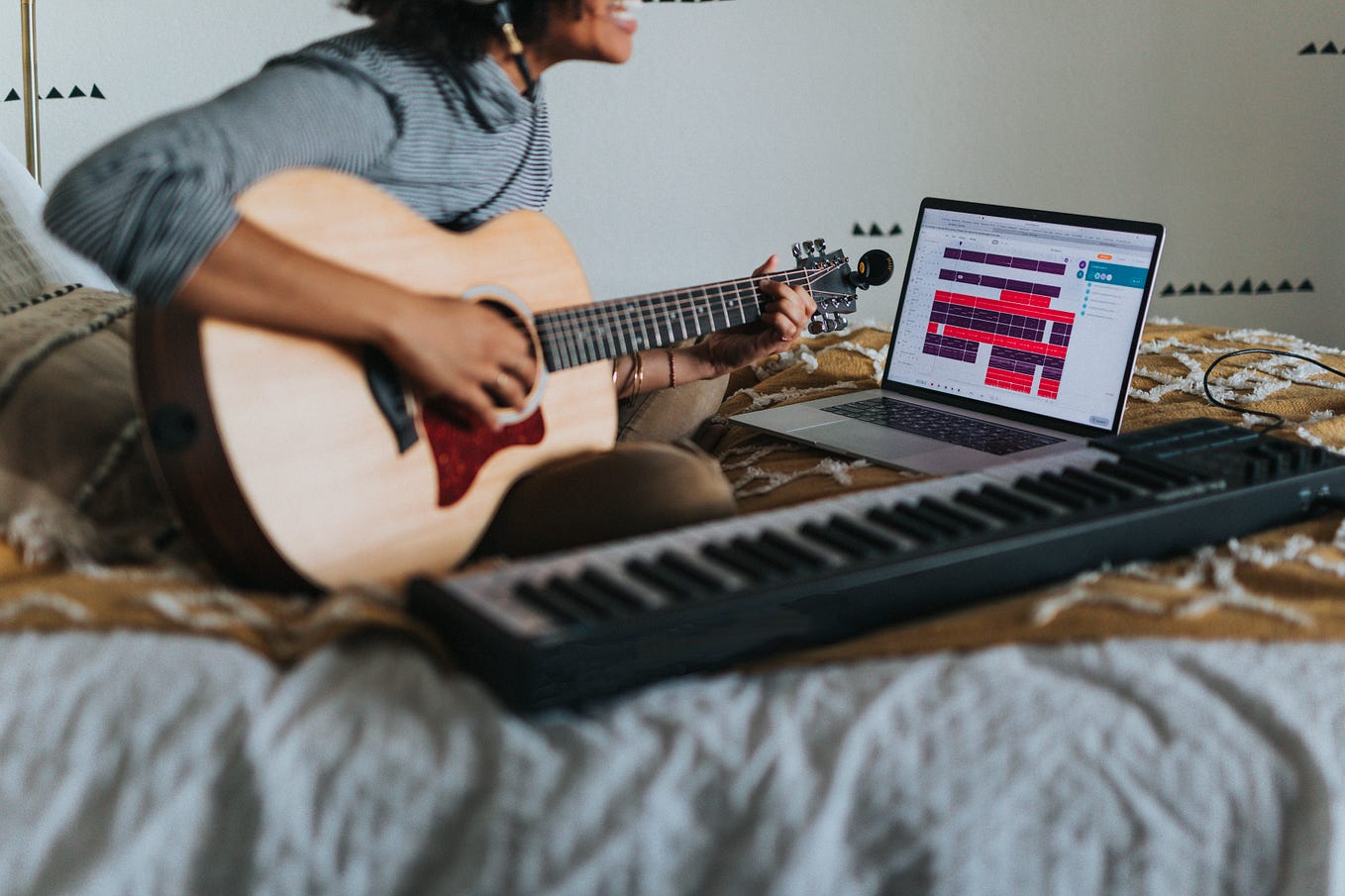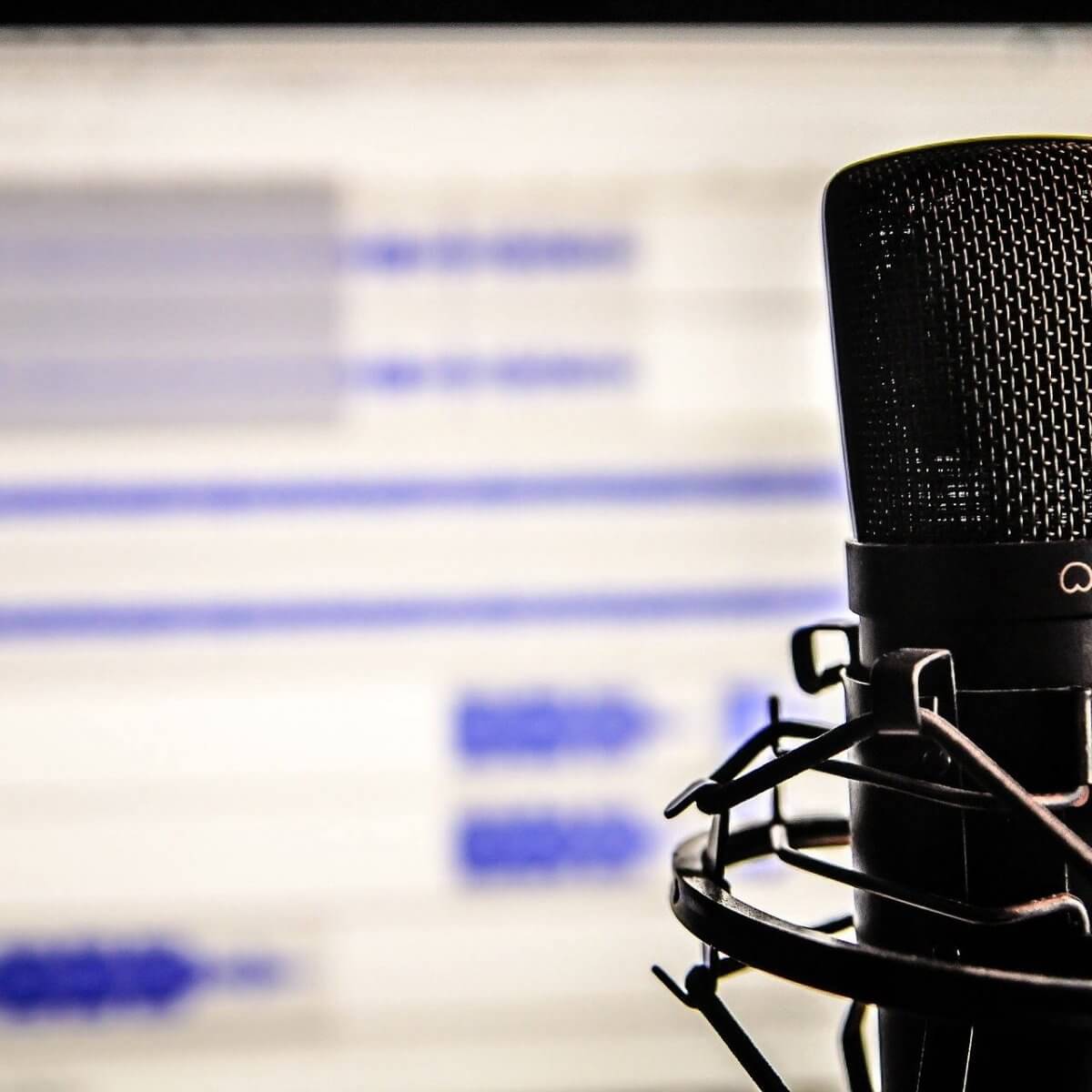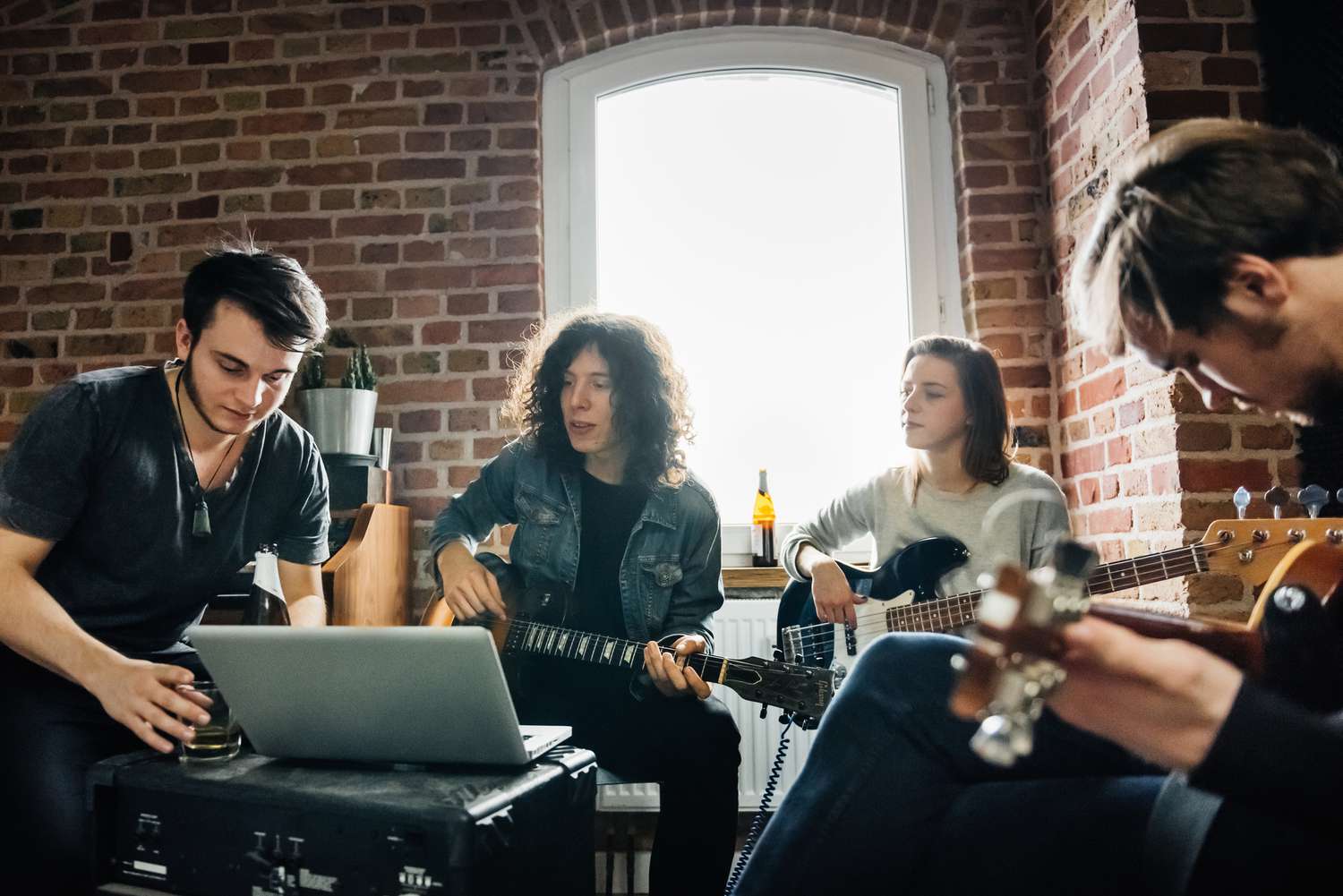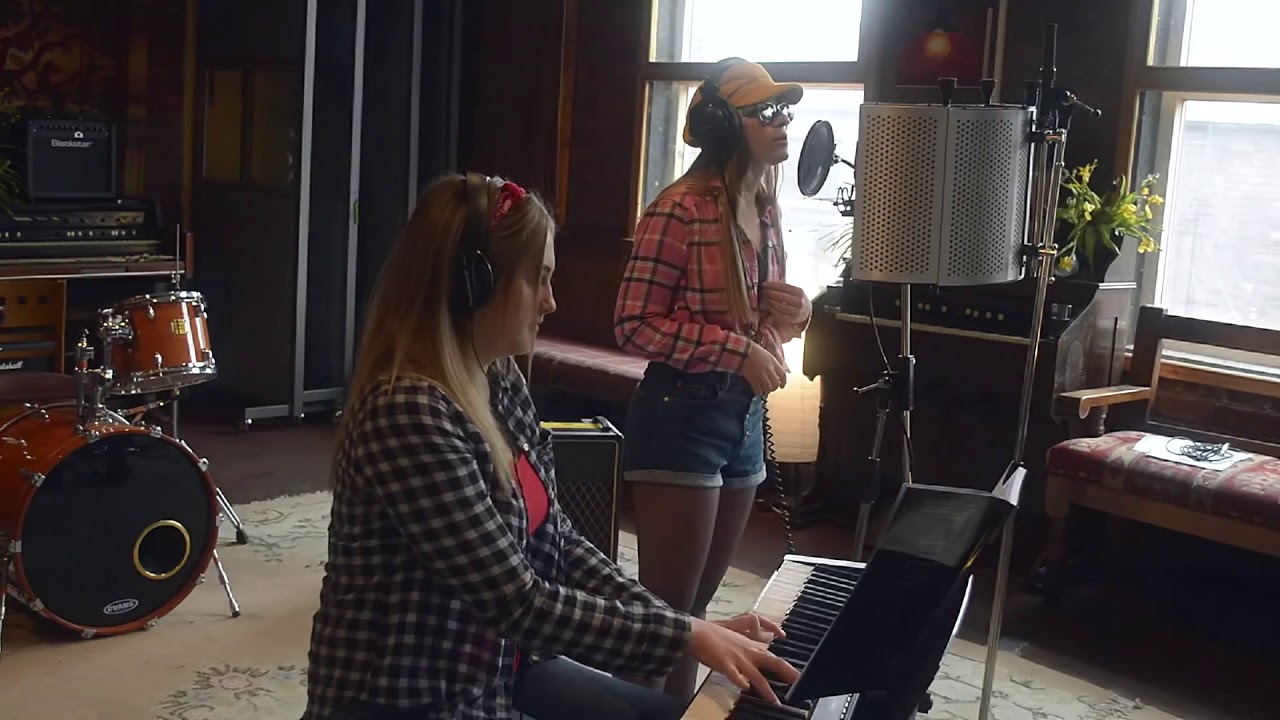Home>Production & Technology>Cover Song>What To Tag A Cover Song On YouTube


Cover Song
What To Tag A Cover Song On YouTube
Modified: January 22, 2024
Discover the best way to tag a cover song on YouTube and increase your visibility. Maximize your reach and get more views with our expert tips and strategies.
(Many of the links in this article redirect to a specific reviewed product. Your purchase of these products through affiliate links helps to generate commission for AudioLover.com, at no extra cost. Learn more)
Table of Contents
- Introduction
- Understanding Cover Song Tags
- Importance of Accurate Tags
- How to Tag a Cover Song on YouTube
- Include the Original Song Title
- Mention the Original Artist
- Add “Cover” or “Cover Song”
- Include Your Name or Band Name
- Specify Genre or Style
- Use Relevant Keywords
- Tag Related Artists or Bands
- Mention Featured Collaborators (if any)
- Include Popular Hashtags
- Add Location Tags (optional)
- Tag Instrumental Covers (if applicable)
- Tag Acapella Covers (if applicable)
- Conclusion
Introduction
Cover songs have the power to captivate audiences, bringing a fresh perspective to well-known tunes. From YouTube to streaming platforms, cover songs are popular among both musicians and listeners. However, when it comes to optimizing cover songs for search engines, using the right tags is crucial.
In the world of online music, tagging a cover song correctly can significantly impact its discoverability and reach. Whether you are an aspiring musician looking to gain exposure or simply sharing your talent with the world, understanding how to tag a cover song on platforms like YouTube is essential.
In this article, we will delve into the art of tagging a cover song and provide you with valuable insights to boost your visibility and increase your chances of being discovered.
Before we dive into the specifics, it’s essential to understand the importance of accurate tags for cover songs. Tags play a vital role in how search engines categorize and display content. They help identify the content’s topic, genre, and relevance, making it easier for users to find what they are looking for.
Without proper tagging, your cover song may get lost in the sea of countless other uploads. By utilizing the right tags, you can increase the chances of your cover song appearing in search results and getting noticed by a broader audience.
Now that we grasp the significance of cover song tags, let’s explore how to tag a cover song effectively on YouTube, one of the most popular platforms for music discovery.
Understanding Cover Song Tags
When it comes to tagging a cover song, it’s essential to understand what tags are and how they function. Tags are keywords or phrases that describe the content of a video, making it easier for search engines to identify and categorize the video correctly. In the context of cover songs, tags help convey important information such as the original song title, artist names, and other relevant details.
Cover song tags serve three main purposes:
- Discoverability: Tags help users find your cover song when they search for specific songs, genres, or artists.
- Categorization: Tags help platforms organize and categorize your cover song in the appropriate music genres or styles.
- Related Content: Tags connect your cover song to related videos, allowing users to easily discover similar content.
By understanding the purpose of cover song tags, you can optimize your tagging strategy to increase the visibility and discoverability of your cover songs.
It’s important to note that while tags are crucial, it’s also essential to use them accurately and relevantly. Misleading or irrelevant tags can lead to negative consequences, such as lower search rankings or user dissatisfaction. So, make sure your tags accurately represent the content of your cover song.
Now that we’ve laid the groundwork, let’s delve into the specific steps on how to tag a cover song on YouTube effectively.
Importance of Accurate Tags
Accurate tags are crucial when it comes to optimizing your cover song’s visibility and discoverability. By using the appropriate tags, you increase the chances of your cover song appearing in relevant search results and reaching your target audience. Here are a few reasons why accurate tags are important:
- Improved search rankings: Search engines rely on tags to understand the context of your cover song. By using accurate tags, you increase the likelihood of your cover song appearing higher in search results, leading to better visibility and increased organic traffic.
- Relevance to user intent: Accurate tags help align your cover song with user intent. When users search for specific songs or artists, they are more likely to come across your cover song if it is properly tagged with the relevant information.
- Enhanced user experience: Using accurate tags ensures that users find what they are looking for. When your cover song accurately represents the original artist and song, users who are specifically seeking out that particular cover will have a positive experience, increasing the likelihood of engagement and shares.
- Targeted audience: By using accurate tags, you attract a more targeted audience who is interested in the specific genre or style of your cover song. This helps you connect with fans who appreciate your musical style, leading to higher engagement and potential growth of your fan base.
Ultimately, accurate tags enhance the overall discoverability and user experience of your cover song. So, take the time to research and choose relevant and precise tags that accurately represent your cover song and appeal to your target audience.
How to Tag a Cover Song on YouTube
Tagging your cover song correctly on YouTube is essential for increasing its visibility and reaching a wider audience. Here are key steps to effectively tag your cover song:
- Include the Original Song Title: Start by including the original song title in your tags. This helps your cover song appear in search results when users are specifically searching for that song.
- Mention the Original Artist: Along with the song title, include the name of the original artist in your tags. This adds relevance and connection to the original version of the song.
- Add “Cover” or “Cover Song”: Make it clear that your video is a cover by including tags like “cover” or “cover song”. This prevents any confusion and ensures that your content is accurately categorized.
- Include Your Name or Band Name: Tagging your name or band name helps establish your identity as the performer of the cover song. It also makes it easier for fans to find and connect with your other content.
- Specify Genre or Style: Tag the genre or musical style of your cover song. This helps categorize your content and attract an audience who appreciates that particular style.
- Use Relevant Keywords: Include relevant keywords in your tags that describe the theme, mood, or specific elements of your cover song. This helps users find your content when searching for related terms.
- Tag Related Artists or Bands: Tagging other artists or bands who are related to your cover song can help expand your reach and connect you with fans who enjoy similar music.
- Mention Featured Collaborators (if any): If you collaborated with other musicians or artists on your cover song, include their names in the tags. This acknowledges their contribution and may help attract their own fanbase.
- Include Popular Hashtags: Utilize popular hashtags related to your cover song, such as the original artist’s name or the genre. This increases the chances of your content appearing in hashtag searches.
- Add Location Tags (optional): If your cover song has a specific connection to a particular location or if you want to target a local audience, consider adding location tags to your video.
- Tag Instrumental Covers (if applicable): If your cover song is an instrumental rendition, make sure to use tags related to instrumental music to attract the right audience.
- Tag Acapella Covers (if applicable): If your cover song is an acapella rendition, include tags related to acapella music to help interested users find your content.
By following these steps and using accurate and relevant tags, you can increase the discoverability and visibility of your cover song on YouTube, helping you reach a wider audience and potentially gain more exposure as a musician.
Include the Original Song Title
One of the crucial steps in tagging a cover song on YouTube is including the original song title in your tags. This helps your cover song appear in search results when users are specifically searching for that particular song. Here’s why including the original song title is important:
Relevance and Accuracy: When users search for a specific song, they are more likely to find your cover if the original song title is included in the tags. This ensures that your cover song is accurately categorized and aligned with the user’s intent.
Discovery: By including the original song title, you increase the chances of your cover song being discovered by users who are searching for that specific track. This can lead to more views, engagement, and potential new fans.
Validation: Including the original song title in your tags also serves as a way to acknowledge the source of your cover. It shows that your rendition is based on a well-known and established song, which adds credibility to your interpretation.
SEO Optimization: Search engines take into account the presence of the original song title in tags when determining search rankings. Including the original song title can boost the visibility of your cover song in search results, increasing the likelihood of attracting organic traffic.
When adding the original song title to your tags, be sure to include any variations or alternate spellings commonly associated with that song. This ensures that your cover song is effectively matched with user search queries.
For example, if you’re covering “Can’t Help Falling in Love” by Elvis Presley, your tags should include variations like “Can’t Help Falling in Love” and “Can’t Help Falling in Love Elvis Presley” to cover a broader range of search queries.
Remember, including the original song title in your tags helps establish the connection between your cover and the original version. It increases the chances of your cover song being discovered by fans of the original artist and attracts users who are specifically searching for that beloved song.
Mention the Original Artist
When tagging a cover song on YouTube, it is important to mention the original artist in your tags. Including the name of the original artist helps establish a connection between your cover and the original version of the song. Here’s why mentioning the original artist is crucial:
Credibility and Recognition: By mentioning the original artist in your tags, you give credit to the original creator of the song. This adds credibility to your cover and shows that you are paying homage to the artist who popularized the song.
Relevance: When users search for a specific artist’s songs, your cover song is more likely to appear in search results if you have tagged the original artist. This increases the chances of your cover being discovered by fans of that particular artist.
Respecting Copyright: By acknowledging the original artist in your tags, you demonstrate that you are aware of and respectful towards copyright laws. This can help prevent any potential copyright infringement claims and maintain a positive relationship with both the original artist and the platform you are sharing your cover on.
Enhanced Discoverability: Tagging the original artist increases the chances of your cover song showing up in related video recommendations or playlists curated specifically for that artist. This can lead to additional exposure and potential new fans who appreciate your interpretation of their favorite artist’s song.
Be sure to use the original artist’s name as it is commonly known to ensure accurate tagging. If the artist’s name has multiple variations or spellings, consider including those variations in your tags to cover a broader range of search queries.
For example, if you are covering “Imagine” by John Lennon, including tags like “Imagine,” “John Lennon,” and “John Lennon Imagine” will help your cover song appear in relevant search results and attract users who are specifically searching for John Lennon’s songs.
By mentioning the original artist in your tags, you establish a connection to the beloved artist and their fanbase. This can lead to increased visibility for your cover song and potentially attract a wider audience who appreciates the original artist’s music and your unique interpretation.
Add “Cover” or “Cover Song”
When tagging a cover song on YouTube, it’s essential to clearly indicate that your video is a cover by adding relevant tags such as “cover” or “cover song”. Including these tags helps viewers understand that your content is not the original version of the song but rather a rendition or interpretation. Here’s why adding “Cover” or “Cover Song” in your tags is important:
Clarification: By including “Cover” or “Cover Song” in your tags, you make it clear to viewers that your video is not the official or original version of the song. This prevents any confusion and ensures that your content is categorized accurately.
Accurate Categorization: Platforms like YouTube have specific categories or sections for cover songs. By including “Cover” or “Cover Song” in your tags, you help your video appear in these dedicated sections, increasing its visibility to those specifically looking for cover songs.
Respecting Copyright: Adding “Cover” or “Cover Song” in your tags demonstrates that you are aware of copyright laws and are not claiming ownership of the original song. This can help prevent any potential copyright infringement claims and maintain a positive relationship with the original artist and the platform.
Targeted Audience: Tags like “Cover” or “Cover Song” attract an audience specifically interested in cover versions of popular songs. This can help you connect with viewers who enjoy listening to or discovering new interpretations of familiar tunes.
In addition to including “Cover” or “Cover Song” in your tags, you can also be more specific by mentioning the original artist or song title alongside it. For example, if you’re covering “Hallelujah” by Leonard Cohen, some relevant tags could be “Hallelujah Cover,” “Hallelujah Cover Song,” or “Leonard Cohen Hallelujah Cover.” This combination of tags helps provide more context and increases the chances of your cover song appearing in searches related to that specific song.
By adding tags like “Cover” or “Cover Song,” you differentiate your content from the original version and attract an audience searching for cover songs. This helps increase the visibility of your cover song and makes it easier for viewers to find and appreciate your unique interpretation.
Include Your Name or Band Name
One key element in effectively tagging a cover song on YouTube is including your own name or band name in the tags. By including this information, you establish your identity as the performer of the cover song and make it easier for fans to find and connect with your other content. Here’s why including your name or band name in the tags is important:
Recognition: By including your name or band name in the tags, you increase the chances of your cover song being recognized as your unique interpretation. This helps establish your identity as an artist and allows viewers to easily associate your name with your cover songs.
Connect with Fans: Including your name or band name in the tags makes it easier for your existing fans to find and support your cover songs. They may actively search for your name or band name to discover new content, and by including it in your tags, you ensure they can easily find your cover songs.
Brand Awareness: Tagging your name or band name helps build brand awareness and loyalty. When viewers come across your cover song and find it appealing, they are more likely to remember your name and seek out your original work or future cover songs.
Personalization: Including your name or band name in the tags adds a personal touch to your cover song. It allows viewers to connect with you as an individual or a group and fosters a sense of familiarity and engagement.
In addition to adding your name or band name as individual tags, consider incorporating your name within other relevant tags. For example, if you are covering “Shape of You” by Ed Sheeran, you can include tags like “Shape of You cover by [Your Name]” or “Ed Sheeran Shape of You cover by [Your Band Name]”. This ensures that viewers recognize you as the performer right from the tags.
Remember, tagging your name or band name in relation to your cover song helps establish your presence and create a strong connection with your audience. It also allows viewers to easily discover your other content, fostering a loyal fan base that supports your musical journey.
Specify Genre or Style
When tagging a cover song on YouTube, it’s important to specify the genre or musical style of your rendition. By including this information in your tags, you provide important context for viewers and help attract an audience that appreciates that particular genre or style. Here’s why specifying the genre or style is crucial:
Relevance: Specifying the genre or style in your tags ensures that your cover song appears in searches related to that specific genre. It helps you connect with viewers who are specifically seeking out or interested in a particular musical style.
Targeted Audience: By tagging the genre or style, you attract a more focused and specific audience. This increases the chances of your cover song resonating with viewers who have a preference for that genre, ultimately leading to higher engagement and potential new fans.
Discoverability: Tags that specify the genre or style increase the visibility of your cover song in related video recommendations or playlists curated for that particular genre. This exposes your cover song to a wider audience and provides an opportunity for your content to be discovered by users exploring that genre.
Genre Recognition: By specifying the genre or style of your cover song, you help viewers quickly identify and categorize your rendition. This assists them in making informed decisions about the type of music they are about to listen to and helps set their expectations accordingly.
When selecting tags that specify the genre or style, use terms that are commonly associated with that genre or style. For example, if you’re covering a song in the rock genre, relevant tags may include “rock cover,” “rock music,” or the specific subgenres like “alternative rock cover” or “classic rock cover.”
Additionally, if your cover song incorporates elements from multiple genres or styles, consider including those in your tags as well. This can help attract a broader range of viewers who appreciate the fusion or crossover of different musical genres.
Remember, specifying the genre or style in your tags allows you to connect with viewers who have a specific musical taste or preference. It helps your cover song appear in relevant searches and playlists, ultimately leading to increased visibility and engagement.
Use Relevant Keywords
When tagging a cover song on YouTube, using relevant keywords is crucial for optimizing the discoverability of your content. By incorporating keywords that describe the theme, mood, or specific elements of your cover song, you increase the chances of your video appearing in relevant search results. Here’s why using relevant keywords is essential:
Improved Search Rankings: Search engines rely on keywords to understand the content of your video and match it with user search queries. By using relevant keywords, you increase the likelihood of your cover song ranking higher in search results, leading to better visibility and attracting more viewers.
Targeted Audience: Using relevant keywords helps attract a specific audience who are searching for content related to those keywords. By aligning your tags with the interests and preferences of your target audience, you increase the chances of your cover song resonating with them and gaining their attention.
Enhanced Categorization: Relevant keywords help platforms categorize your cover song correctly. This ensures that your video appears in the right sections or playlists related to the specific theme or mood of your cover song, increasing its visibility to viewers who are interested in that particular type of music.
Descriptive Context: Incorporating descriptive keywords in your tags provides additional context about your cover song. This helps viewers understand the unique aspects or interpretations you bring to the original song, attracting those who are looking for fresh or innovative renditions.
To identify relevant keywords for your cover song, consider the emotions, themes, instruments, or techniques that are prominent in your rendition. For example, if you’re covering a song with a melancholic and acoustic arrangement, relevant keywords could include “acoustic cover,” “emotional rendition,” “acoustic guitar,” or “heartfelt interpretation.”
It’s important to strike a balance between using specific keywords and avoiding overstuffing your tags. Focus on using keywords that accurately represent your cover song and provide meaningful context without going overboard.
Remember, using relevant keywords helps your cover song align with user search queries, increasing the chances of your video appearing in search results and attracting a targeted audience. Be thoughtful and strategic in your keyword selection to optimize the discoverability of your cover song.
Tag Related Artists or Bands
When tagging a cover song on YouTube, it’s beneficial to tag related artists or bands whose music is similar to yours or who have influenced your cover song. Tagging related artists or bands helps expand your reach and connect with viewers who enjoy similar music. Here’s why tagging related artists or bands is important:
Expand Your Audience: Tagging related artists or bands increases the chances of your cover song appearing in searches or recommendations for fans of those artists. This exposes your cover song to a wider audience and helps attract viewers who already have an affinity for similar styles or genres.
Connect with Fans: By tagging related artists or bands, you can capture the attention of their existing fanbase. Fans of those artists may be interested in hearing cover songs or reinterpretations of their favorite songs, and by tagging those artists, you increase the likelihood of attracting those fans to your content.
Discoverability: Tagging related artists or bands can help your cover song show up in playlists or recommendations that feature their music. This extends the reach of your cover song and increases its chances of being discovered by users who are exploring content related to those artists.
Genre Affiliation: Tagging related artists or bands helps place your cover song within a particular genre or style. This can be especially useful if your cover aligns with a specific artist’s distinctive sound or if you are covering songs within a specific musical niche.
When tagging related artists or bands, choose those whose music is genuinely similar to yours or who have a significant influence on your cover song. Make sure to use the correct spelling and variations of their name to accurately tag their artist profile.
For example, if you’re covering a song by Taylor Swift, relevant tags could include “Taylor Swift cover,” “Taylor Swift songs,” or even the names of other artists who belong to the same genre or style, such as “Ed Sheeran,” “Adele,” or “Country Pop.”
Remember, tagging related artists or bands helps you tap into established fanbases, expand your reach, and connect with viewers who are already interested in similar music. It can increase the visibility and potential reach of your cover song, opening up new possibilities for engagement and growth.
Mention Featured Collaborators (if any)
If you collaborated with other musicians or artists on your cover song, it’s important to mention them in your tags. Highlighting your featured collaborators helps acknowledge their contribution and can attract their own fanbase to your content. Here’s why mentioning featured collaborators is important:
Collaborative Recognition: By mentioning your featured collaborators in the tags, you showcase the collaborative nature of your cover song. This recognizes their talent and gives credit to their participation in the creation of the cover, fostering a positive and supportive music community.
Expanded Reach: Mentioning your featured collaborators exposes your cover song to their existing fanbase. Fans of your collaborators may be interested in exploring their work and may discover your cover song as a result, leading to increased views, engagement, and potential new fans.
Shared Promotion: When you mention your featured collaborators in the tags, it opens the door for shared promotion. Your collaborators may also share the cover song on their own platforms, social media, or websites, leveraging their own network to increase the visibility and reach of the cover song.
Collaborative Fan Interaction: By including your featured collaborators’ names in the tags, you create a space for fans of both artists to interact and engage with your content. This can lead to valuable connections and collaborations, building a loyal and supportive fanbase for future endeavors.
When mentioning featured collaborators in your tags, use their names accurately and consistently. Include variations if necessary to cover different search queries or alternate spellings of their names.
For example, if you collaborated with another artist named John Smith on your cover song, relevant tags could include “John Smith cover,” “John Smith collab,” or “John Smith featured.” Additionally, you can include their artist or band name if they have one, making sure to tag it correctly.
Remember, mentioning your featured collaborators in the tags not only recognizes their contributions but also expands your reach and fosters community engagement. Collaborations can bring new perspectives and dynamics to your cover song, and highlighting the collaborative effort can enhance the overall impact and reception of your content.
Include Popular Hashtags
When tagging a cover song on YouTube, incorporating popular hashtags can significantly boost the discoverability and visibility of your content. Hashtags help categorize your video and make it more likely to appear in searches or recommendations for specific topics or trends. Here’s why including popular hashtags is important:
Increased Visibility: Popular hashtags have a wide reach and are widely used by users searching for, or interested in, specific themes or genres. By including these hashtags in your tags, you increase the chances of your cover song being discovered by users exploring content related to those hashtags.
Engagement: Hashtags serve as a way for users to easily find and follow specific topics or trends. Including popular hashtags in your tags can lead to increased engagement, as users who are interested in those hashtags are more likely to come across your cover song and engage with it.
Trending Content: By using popular hashtags, your cover song may have a higher chance of appearing in search results or recommendations for trending or viral content. This exposes your video to a larger audience, increasing the likelihood of it going viral or gaining traction.
Community Participation: Popular hashtags often have a dedicated community of users who actively search and engage with content associated with those hashtags. By including these hashtags in your tags, you can tap into these communities, attracting viewers who are passionate about the specific topic or trend related to the hashtag.
When selecting popular hashtags to include in your tags, research the trending or commonly used hashtags relevant to your cover song. Consider the song title, genre, or any current trends related to the music industry. It’s important to choose hashtags that are relevant and accurately represent your cover song.
For example, if you are covering a popular song by Beyoncé, you can include hashtags like #Beyoncé, #CoverSong, and #MusicCover. Additionally, keep an eye out for any specific trending hashtags that relate to the song or the artist’s recent releases or events.
Remember, including popular hashtags in your tags can significantly increase the discoverability and visibility of your cover song. It helps you reach a wider audience and engage with passionate communities who are actively searching for or interested in content related to those hashtags.
Add Location Tags (optional)
Location tags are an optional but valuable addition when tagging a cover song on YouTube. Including location tags helps target a specific audience in a particular geographic area and can make your cover song more relevant to viewers from that region. Here’s why adding location tags can be beneficial:
Localized Targeting: By adding location tags, you can target viewers from a specific region or location. This is particularly useful if your cover song has a connection to that area, such as being a local artist covering a well-known song from that region or performing a cover in a distinct local style.
Audience Connection: Including location tags fosters a sense of connection with viewers who are from or have an interest in that specific location. It helps you resonate with local audiences who appreciate seeing content related to their region and may lead to stronger engagement and support from that community.
Discoverability for Local Users: When users search for content with location-specific keywords or filter content based on location, adding location tags increases the chances of your cover song appearing in those searches. This can help your content stand out and be more easily discovered by users interested in local or regional music.
Targeting Local Events or Themes: If your cover song is related to a local event, festival, or theme, adding location tags helps align your content with that particular context. This makes your cover song more relevant to viewers who are specifically seeking content related to that event or theme.
When adding location tags, use the name of the city, state, or country in your tags. Be specific and ensure the accuracy of the locations you mention. Only add location tags if they are relevant and enhance the overall context of your cover song.
For instance, if you’re covering a song associated with a specific city like “New York, New York,” including location tags like #NewYork #NYC or #Manhattan can help attract viewers who are searching for content related to that particular city or region.
Remember, while location tags are optional, they can be a helpful tool for targeting specific audiences and enhancing the relevance of your cover song to viewers in a particular geographic area. Consider adding location tags if they add value and context to your content.
Tag Instrumental Covers (if applicable)
If your cover song is an instrumental rendition without vocals, it’s important to tag it as such. Tagging instrumental covers accurately helps users looking specifically for instrumental versions of songs discover your content. Here’s why tagging instrumental covers is important:
Targeted Audience: Tagging your instrumental cover as such allows you to reach a specific audience who are looking for instrumental versions of songs. This includes listeners who enjoy the music itself or those who may be seeking instrumentals for karaoke, background music, or creative projects.
Search Relevance: By tagging your instrumental cover with related keywords such as “instrumental,” “instrumental cover,” or specifying the instruments used, you increase the chances of your cover appearing in search results when users specifically search for instrumental versions of songs.
Clear Differentiation: Specifying that your cover is purely instrumental helps avoid confusion for viewers who may be expecting vocals. It ensures that your audience understands what they are about to listen to and allows them to appreciate the artistry of your instrumental interpretation.
Music Licensing: Tagging your instrumental cover as such helps distinguish it from the original song, which is important when it comes to copyright and music licensing matters. It shows that your rendition focuses on the musical composition rather than the original lyrics and vocal performance.
When tagging your instrumental cover, consider including keywords that describe the genre or style of the instrumental arrangement, along with the song title and artist’s name. For example, tags like “instrumental cover,” “acoustic instrumental,” or “jazz instrumental cover” can help accurately characterize your rendition.
Remember, tagging your instrumental cover accurately is important to attract the right audience who are specifically looking for instrumental versions of songs. By using relevant tags, you increase the discoverability and reach of your cover and appeal to listeners who appreciate the beauty of instrumental music.
Tag Acapella Covers (if applicable)
If your cover song is an acapella rendition without any instrumental accompaniment, it’s important to tag it as such. Tagging acapella covers accurately helps users looking specifically for acapella versions of songs discover your content. Here’s why tagging acapella covers is important:
Targeted Audience: Tagging your acapella cover as such allows you to reach a specific audience who appreciate and enjoy acapella music. This includes listeners who are interested in the unique vocal harmonies, the absence of instrumental accompaniment, and the artistry involved in performing songs with just vocals.
Search Relevance: By tagging your acapella cover with related keywords such as “acapella cover” or “vocal only,” you increase the chances of your cover appearing in search results when users specifically search for acapella versions of songs. This ensures that your content is relevant to users seeking that particular style.
Clear Differentiation: Specifying that your cover is an acapella rendition helps differentiate it from versions that include instrumental accompaniment. It ensures that your audience understands the unique nature of your performance and can appreciate the vocal skills and arrangements involved.
Showcasing Vocal Talent: Tagging your cover as an acapella version emphasizes the focus on vocal talent and abilities. It draws attention to the intricate vocal techniques, harmonies, and creative arrangements in your rendition, allowing viewers to appreciate the beauty of acapella performances.
When tagging your acapella cover, consider including keywords that highlight the genre, style, or specific vocal techniques used. For example, tags like “acapella cover,” “vocal harmony,” or “beatbox acapella” can accurately describe your rendition and attract viewers interested in acapella music.
Remember, tagging your acapella cover accurately is important to attract the right audience who are specifically looking for acapella versions of songs. By using relevant tags, you increase the discoverability and reach of your cover and appeal to listeners who appreciate the artistry and musicality of acapella performances.
Conclusion
Tagging a cover song on YouTube is a vital aspect of optimizing its discoverability and reaching a wider audience. By utilizing the right tags, you increase the chances of your cover song appearing in relevant search results and attracting viewers who appreciate your unique interpretation.
Throughout this article, we’ve explored various key steps to tag a cover song effectively on YouTube. From including the original song title and mentioning the original artist to specifying the genre or style, using relevant keywords, and tagging related artists or bands, each step plays a crucial role in enhancing the discoverability and visibility of your cover song.
Furthermore, we discussed the importance of accurate tags, which not only help search engines categorize and display your content but also ensure a positive user experience and respect for copyright laws. It’s essential to be thoughtful and relevant in choosing your tags to accurately represent the content of your cover song.
Additionally, we considered optional elements such as adding your name or band name, including popular hashtags, and incorporating location tags, which can further tailor the reach and appeal of your cover song to specific audiences.
Whether your cover song is instrumental or acapella, it’s crucial to include specific tags that highlight the unique nature of your performance, attracting audiences who appreciate those specific styles of music.
In conclusion, tagging your cover song effectively on YouTube requires a thoughtful approach. By following the steps outlined in this article, you can maximize the discoverability, visibility, and engagement of your cover song, ultimately reaching a broader audience and gaining recognition for your artistic interpretation.
Remember, a well-tagged cover song not only aligns with user intent and enhances search rankings but also showcases your creativity and talent to the world. So, take the time to research and select the most relevant and accurate tags that represent your musical style and ensure your cover song stands out in the vast sea of online content.

